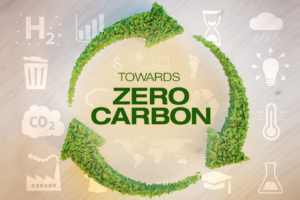The Floating LNG Power Vessel market represents a transformative approach to meeting energy demands with flexibility and efficiency. These vessels integrate LNG regasification and power generation capabilities, offering a mobile and scalable solution to energy needs, particularly in remote or rapidly developing regions. Here’s an in-depth exploration of the Floating LNG Power Vessel market, covering its components, applications, market dynamics, challenges, and future prospects.
Components and Functionality
Floating LNG Power Vessels are self-contained units designed to operate offshore or near coastal areas. They typically include:
- LNG Storage and Regasification Facilities: These vessels have onboard storage tanks for LNG and equipment to convert LNG back into its gaseous form (regasification), ready for use as fuel.
- Power Generation Units: Integrated power generation systems, often including gas turbines or engines, convert LNG-derived gas into electricity.
- Mooring and Support Systems: Mechanisms for secure mooring offshore, ensuring stability and safety in varying sea conditions.
Download Sample Report: https://www.zionmarketresearch.com/sample/floating-lng-power-vessel-market
Applications and Market Segments
1. Emergency Power and Rapid Deployment:
- Disaster Relief: Rapidly deployable to disaster-stricken areas lacking electricity infrastructure.
- Temporary Power Solutions: Providing interim power during infrastructure development or repair.
2. Off-grid and Remote Areas:
- Island Communities: Supplying continuous power where onshore infrastructure is limited.
- Offshore Facilities: Supporting energy needs of oil rigs, offshore platforms, and maritime operations.
3. Peak Shaving and Grid Support:
- Grid Stability: Acting as backup or supplementary power sources during peak demand periods or grid instability.
- Integration with Renewable Energy: Supporting renewable energy grids with flexible power generation capabilities.
Market Dynamics and Growth Drivers
1. Energy Transition and Clean Energy Demand:
- Growing global emphasis on reducing carbon emissions drives adoption of cleaner fuels like LNG over coal and diesel.
- Flexible deployment options align with the intermittent nature of renewable energy sources, enhancing grid stability.
2. Economic Viability and Cost Efficiency:
- Lower upfront costs compared to building traditional onshore power plants, especially in remote or offshore locations.
- Operational efficiency and scalability make Floating LNG Power Vessels economically attractive for short and medium-term energy projects.
3. Technological Advancements:
- Advances in LNG storage, regasification, and power generation technologies improve vessel efficiency and performance.
- Integration of digital solutions and automation enhances operational safety and efficiency.
4. Geopolitical and Market Expansion:
- Strategic deployment in regions with burgeoning LNG infrastructure and growing energy demand, such as Asia-Pacific, Africa, and South America.
- Collaboration with local governments and energy providers to secure long-term contracts and partnerships.
Challenges and Considerations
1. Regulatory and Environmental Compliance:
- Adherence to stringent environmental standards and maritime regulations for safe operation and emissions control.
- Mitigation of environmental impacts, including noise pollution and potential LNG spills.
2. Supply Chain and Market Volatility:
- Fluctuations in LNG prices and supply chain disruptions affect project economics and viability.
- Geopolitical factors influencing LNG availability and pricing require careful risk management.
3. Technical Complexity and Safety:
- Engineering challenges in designing and maintaining offshore structures for prolonged operational periods.
- Safety protocols for LNG handling and storage, ensuring crew and environmental safety in offshore environments.
Future Outlook
The Floating LNG Power Vessel market is poised for substantial growth, driven by advancements in LNG technology, increasing energy demand, and the global shift towards cleaner energy solutions. Key trends include:
- Hybrid Energy Systems: Integration with renewable energy sources to optimize power generation and reduce carbon footprint.
- Expansion in Emerging Markets: Targeting regions with limited energy infrastructure and growing industrialization.
- Technological Innovations: Continued development of floating LNG technologies to enhance efficiency, safety, and environmental performance.
In conclusion, Floating LNG Power Vessels represent a pivotal innovation in the energy sector, offering versatile solutions to meet diverse energy needs worldwide. As the market matures, strategic partnerships, technological advancements, and regulatory frameworks will shape its evolution towards a sustainable and resilient energy future.
Visit To Our LinkedIn Page: https://www.linkedin.com/company/zmr-blog/
Read Also: https://www.linkedin.com/pulse/top-beer-companies-world-comprehensive-overview-2024-zmr-blog-vt8zf?
https://www.linkedin.com/company/trendtracker-insights/
https://www.linkedin.com/pulse/in-depth-analysis-specialty-fats-market-size-share-mwmac?


